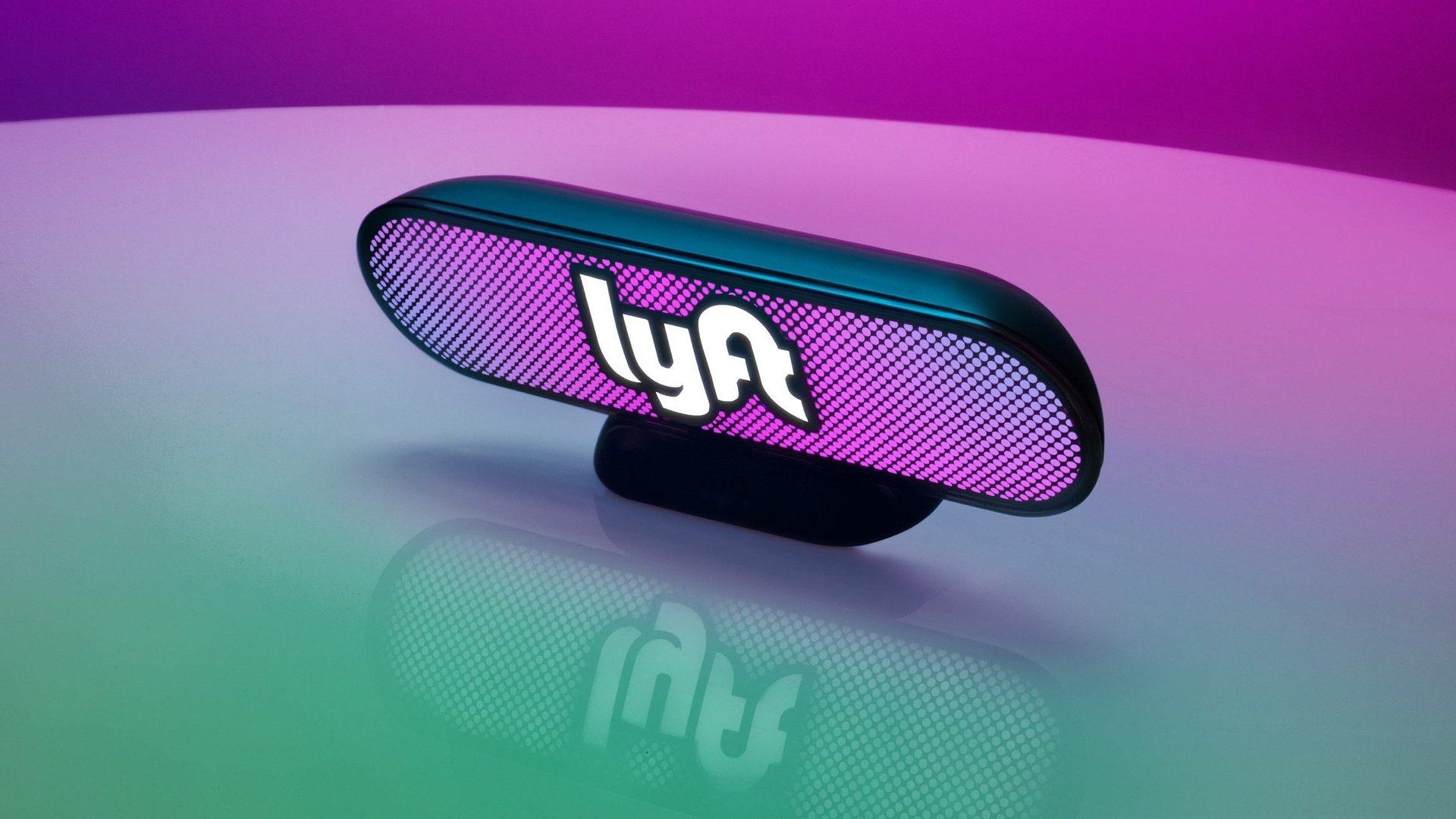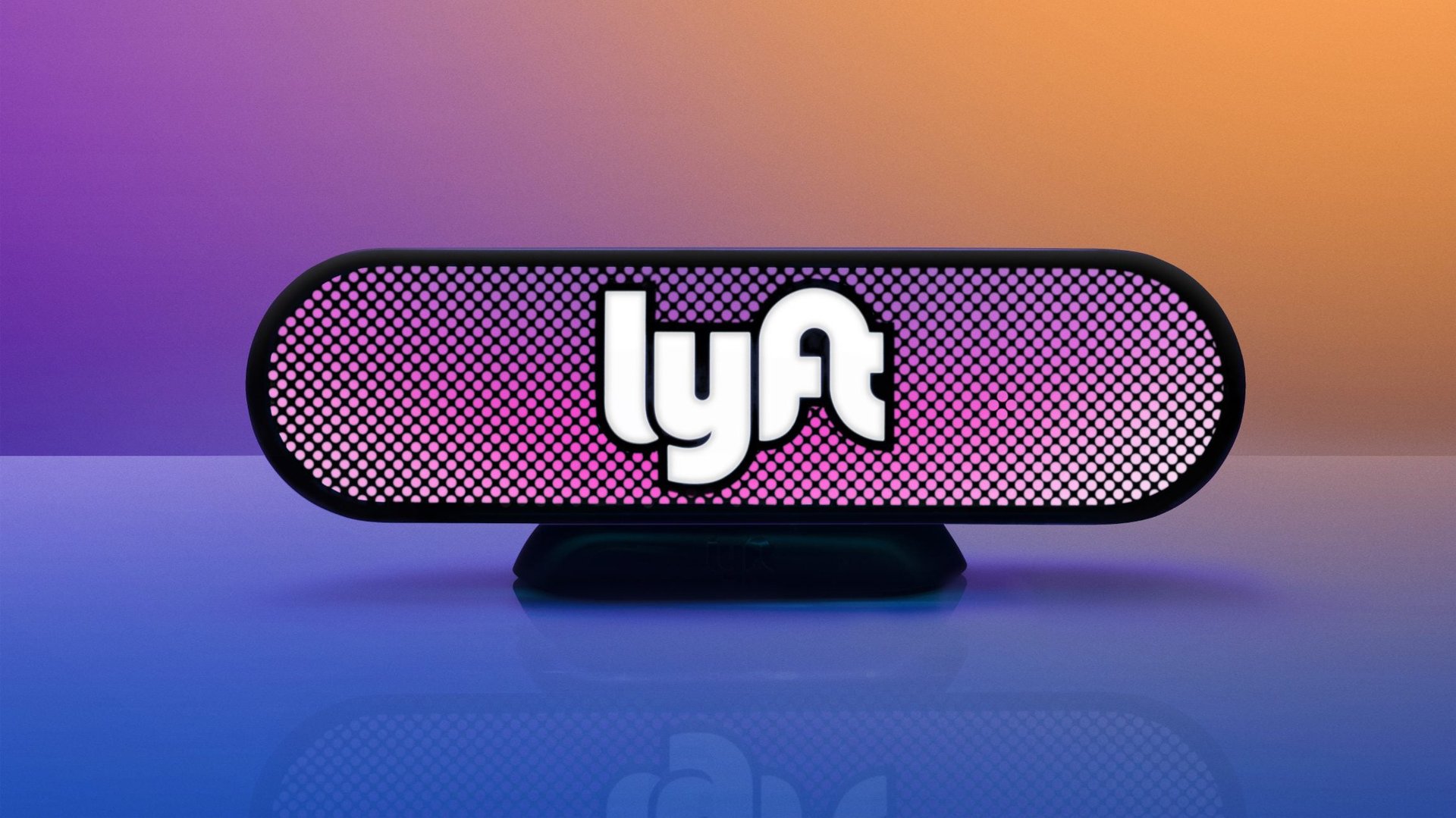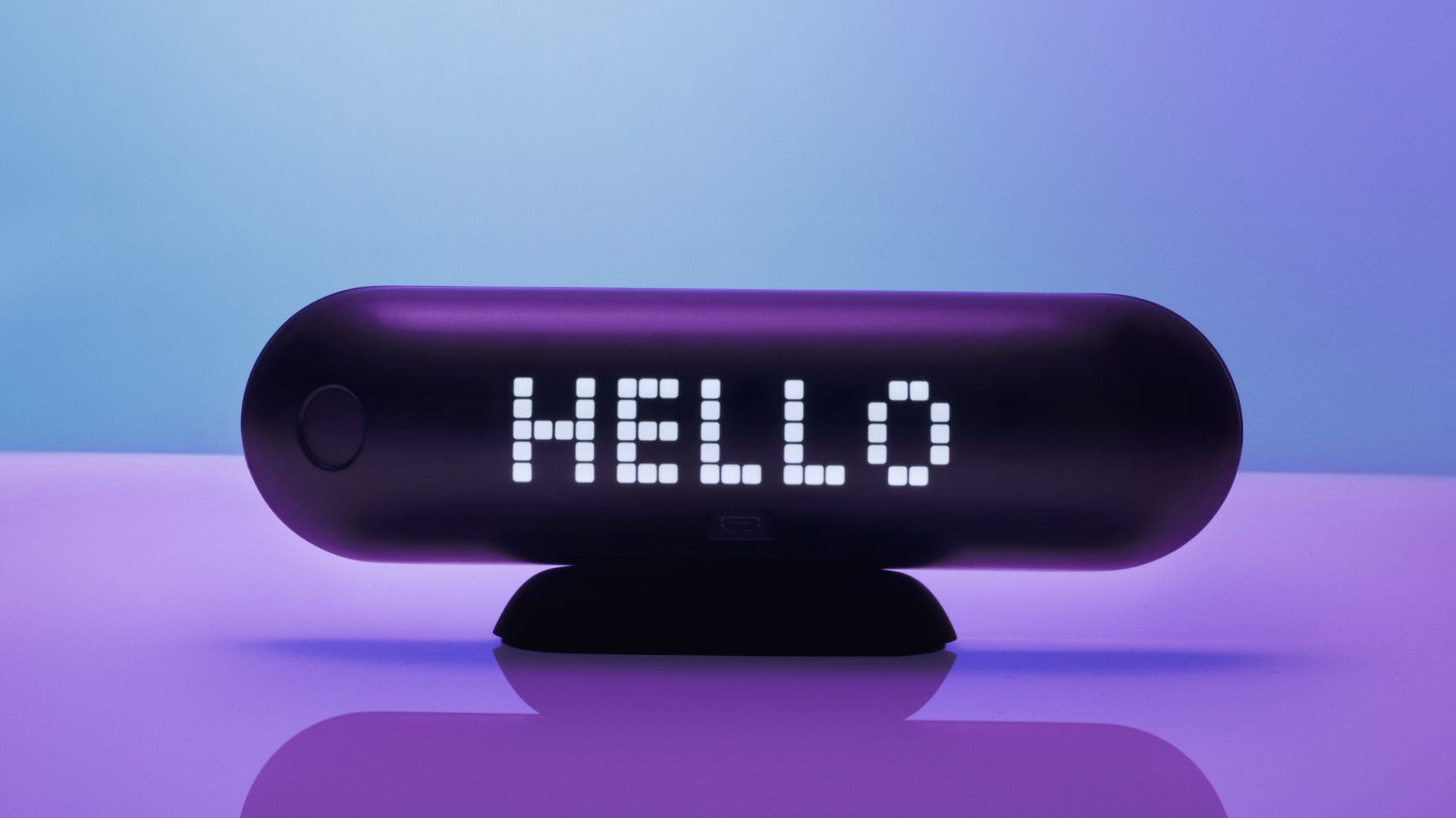Lyft has finally figured out a way to make finding your driver less awkward
The pink mustache is dead. Today, at long last, ride-hailing company Lyft is retiring the plush, goofy icon that has adorned its dashboards since 2012, and replacing it with a new branding device called the Lyft Amp.


The pink mustache is dead. Today, at long last, ride-hailing company Lyft is retiring the plush, goofy icon that has adorned its dashboards since 2012, and replacing it with a new branding device called the Lyft Amp.
The Lyft Amp, or amp, for short, looks sort of like a portable speaker if your speaker also had LED screens built into the front and back. It’s Bluetooth-enabled and designed to rest on the dashboard of Lyft’s cars, starting on New Year’s Eve, when the company will distribute 15,000 of them to drivers in New York, San Francisco, Las Vegas, and Los Angeles. Lyft is hoping the amp will invigorate its brand in a competitive market as well as solve an everyday frustration of ride-hailing: helping passengers get into the right cars.

The front of the amp (what people on the street would see from outside the car) glows all manner of psychedelic colors behind a prominent “Lyft” logo. The back (which faces the driver and the car’s passengers) is designed to flash words and scroll longer messages in a pixelated font reminiscent of the text on a graphing calculator.

Lyft plans to use the new gadget to streamline pickups using a technique it’s dubbed “beaconing.” When a driver gets within a certain distance of a rider, the company explains, the front side of the amp will illuminate with a color that the rider also sees in their Lyft app. ”Essentially, because it’s a paired device, as the car’s approaching, we can send a unique color to the amp so that once you get within a minute of the car pulling up you see the specific color,” Ethan Eyler, Lyft’s head of ride experience and the man behind the original fuzzy pink mustache, told reporters in New York on Nov. 14.
Beaconing could prove a useful solution to that awkward problem of not being sure whether a car is your Lyft, versus another vehicle that happens to be pulled over in the same place. In a crowded pickup spot like an airport, Lyft says it would assign each person in a cluster a different color, making it easier for riders and drivers to find their matches.
Uber began testing its own version of this technology last year in Seattle, “Spot,” which aims to enable “seamless pickups through color coding” using long, thin lights that illuminate on the windshield.
Lyft’s design team spent the last year working on this new gadget, and believes it will be a “differentiator” for the company in the competitive and increasingly commoditized business of providing on-demand rides. “This is the next generation of Lyft’s in-car branding,” Eyler says. “It’s going to sit front and center on the dash of every Lyft vehicle.”
The company envisions using the amp to boost engagement with its users. For example, the company said it might light the amp in the colors of a local sports team for a big game, or with a vibrant rainbow for a national celebration such as Pride. The back of the amp could also display inspirational messages to drivers, or let them know when they’re approaching a work milestone (like a certain number of completed trips) that would lock in additional earnings.
Lyft remains a distant second to Uber in the US. A recent report from research firm 7Park Data found Uber commanded 70% to 80-ish% of car-hailing revenue in most major American cities as of this August. Lyft was said this summer to be seeking a buyout at a price of up to $9 billion, a significant premium on its most recent valuation of $5.5 billion. Co-founder John Zimmer has repeatedly denied the reports, saying his company is “not for sale.”